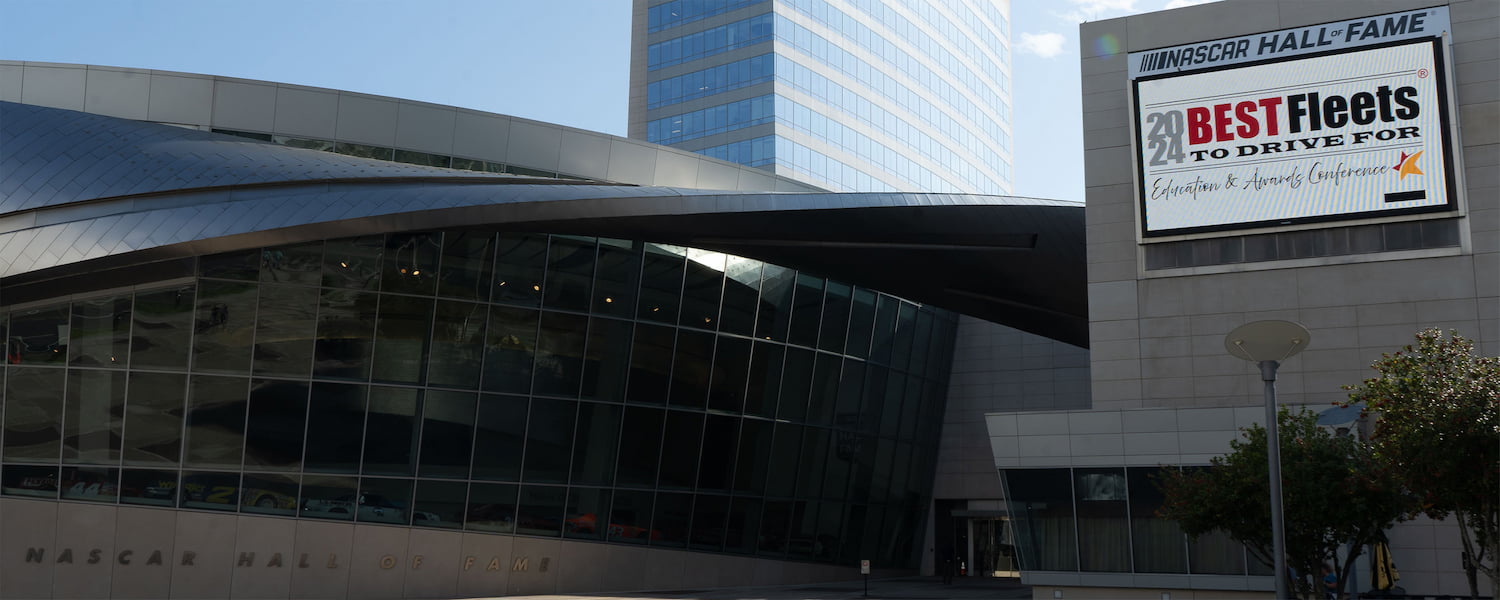Culture is not a fixed object
Published on April 22, 2024
At the Best Fleets to Drive For® Education and Awards Conference in early April of this year, CarriersEdge CEO Jane Jazrawy gave a State of the Industry address that expressed some poignant and important insights about company culture, constant improvement and being a Best Fleet. After a wealth of requests to get a copy of that speech, here it is in its entirety.
“Hello everyone – welcome! And thank you for being here at the first ever Best Fleets to Drive For Education and Awards Conference!
It has been a nerve-wracking journey to be here, but we have arrived. And I’d like to first thank our sponsors. At every event, you hear about thanking sponsors, but I’d like to give a special shoutout to them again – EpicVue, TruckRight and Netradyne. It would be a heckuva lot harder to be standing on this stage if it weren’t for their support.
Programs like Best Fleets are essential to move the industry forward. Before Best Fleets, instead of “human resources”, carriers only had “recruiting” to fill seats after drivers left. Instead of proactively asking drivers about their satisfaction, fleets waited for someone to complain when there was a problem. There wasn’t an industry program that clearly connected the programs a carrier offered to drivers with its safety performance and driver satisfaction.

Now in our 16th year, we have seen the top 20 make a huge difference in the industry. They are active in their associations, they experiment with new programs, and they educate the non-trucking world about the benefits of the industry. By sharing their experience in benchmarking groups, at national and regional conferences, in the media and in conversations with their peers, the Best Fleets have led the way to improving the driver experience and bringing a new generation into the industry.
Breaking new groundWe first heard about guaranteed pay years ago from Nussbaum Transportation and Boyle Transportation, both in the Hall of Fame and celebrating 10 consecutive years as a Best Fleet. Now, many more carriers are using some form of driver pay stabilization.
When ELDs were mandated, many of the Best Fleets were already using them. In fact, years before the mandate, these fleets had already gone through the experience of having drivers quit because they didn’t like the ELDs, and then having them come back because they realized it was better with them.
We first heard of driver scorecards well before CSA was introduced in 2010. Before CSA, many companies had no way of tracking or communicating with drivers about their performance. Now, it’s not about whether or not you have a scorecard, but how effectively you use it and how well it works with your camera system.
The Best Fleets continue to lead. When the rest of the industry says “it’s impossible”, they say, “how can we make this work?” They experiment with new communications tech, ways to improve driver experience on the road, environmental innovations (including electrification) and they test out new solutions to the complex issue of driver home time. They have been leaders in driver education and are producing the next generation of million-mile drivers.
So what is the secret to becoming a Best Fleet?First, let me talk a little bit about workplace culture. In 2020 when no one could go to work normally, workplace culture became a hot topic. Nowadays, companies tout their amazing culture when they recruit, but they don’t really talk about what it means. I suspect they don’t even know. The reality is this:
Culture is not a fixed object.
It doesn’t stay in one place. Your workplace is an organization – and organizations are like a living entity, like a garden.
Every day, your company is pulled and pushed by your driving team, your office team, your customers, management and sometimes investors. To make your company a Best Fleet is to pay attention to that pulling and pushing. Like a garden, things sometimes grow where they shouldn’t. In a garden, when that happens, you can do some weeding or replanting. In your business, you make small corrections, introduce new programs and move things so they are pointing in the right direction.
How do you do that? This is where the secret to becoming a Best Fleet comes in. It’s ruthless reflection.
Ruthless reflectionWhat does that phrase mean? It means every year, whether you make it onto the top 20 list or not, your team answers 100-odd questions about what you do for your drivers.
You participate in an interview with us, where we might ask you some weird or unsettling questions. You get a report and you look at the driver survey responses.
And instead of saying “we can’t do that”, you ask yourselves, “how could we do this better?”
You do this every year. You make small incremental improvements that mold your culture to be more driver-centric. Then, win or lose, you come back the next year. Rinse and repeat.
The value of Best Fleets is not in whether you make it onto the list. The value is in that annual process of reviewing the many questions we ask and thinking about the answers.
Because when you don’t look back and take an honest look at where you’ve been, you can’t move forward and you don’t get better.
This is true for individual companies and it’s true for the entire industry.
Transformational change is going to hit trucking in the next 20 years. We’ve seen some of that change happen over the last 10.
CSA was mandated. ELDs were mandated. Entry-level programs were mandated. Electrification has been mandated and even if the industry successfully fights it off, something else is going to be mandated. The fleets that will be ahead of the curve are going to be the ones who practice ruthless reflection and address the gaps they currently have in their organization. These are the ones who aren’t afraid to move forward with change, while tending to their culture at the same time.
What we do every year through the program is give every nominated fleet a chance to start practicing ruthless reflection. Our questions change as the industry changes, which is why they sometimes seem strange. But the fleets who participate in this process and think about the questions have a head start on issues that will likely impact the industry within the next few years. The Best Fleets know that the process works. And we invite every fleet to be a part of it in 2025.
Thank you.”







